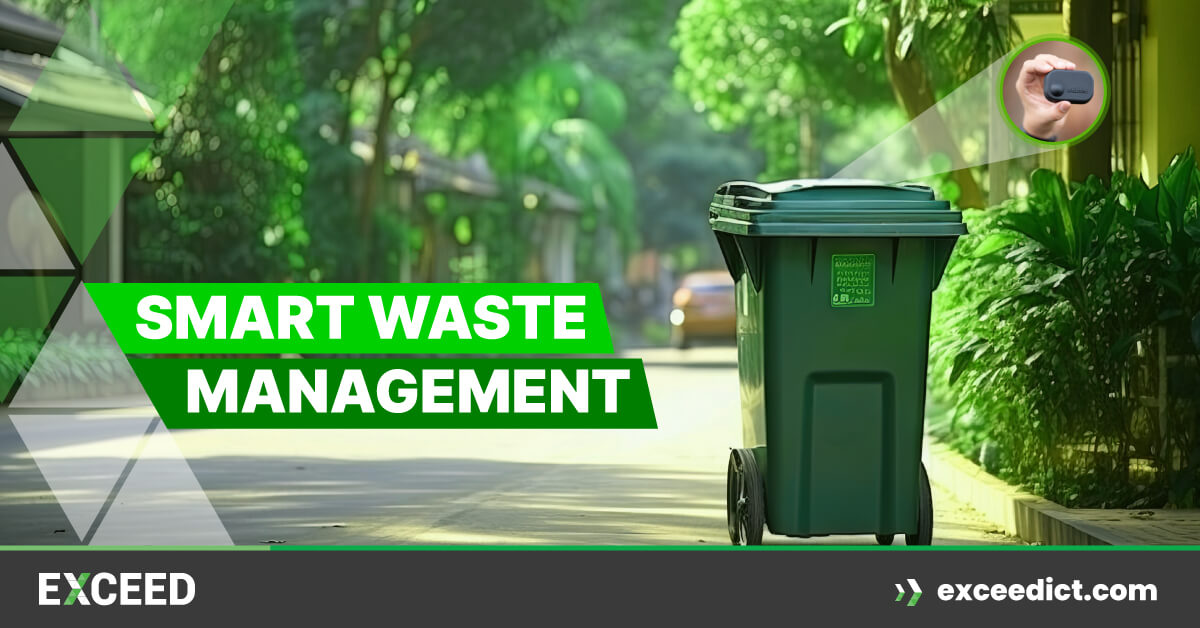
The Cassowary Coast Regional Council is committed to protecting and supporting the region’s natural environment for future generations. Despite the region’s natural beauty, it was faced with a significant waste management problem. But with the installation of smart bin sensors, the council can make more informed decisions about waste collection.
- 72% Reduction in waste management complaints
- 78% Decrease in waste management crew dispatchment
4700 square kilometres territory covered by the Council
CHALLENGE
Background

Located on the fringes of the Great Barrier Reef and bordered by the Wet Tropics Rainforest, the Cassowary Coast Regional Council is committed to protecting and supporting the region’s natural environment for future enerations.
The Cassowary Coast Council covers 4,700 square kilometres in Far North Queensland and has a population of approximately 29,600 people.
Improving community and environmental outcomes with smart bin
Despite the region’s natural beauty, Cassowary Regional Council was faced with a significant waste management problem: bins were overflowing, garbage was being illegally dumped, and some bins were not being used at all.
We had a real issue with waste. We had waste overflowing literally out of our bins. Our community had enough. We had to find a solution, and that solution wasn’t just about the physical waste, it was the waste in the process.
Andrew Graffen, CEO,
Cassowary Coast Regional Council
Graffen explained that poor bin placements, mistimed bin collections, and inefficiencies in the council’s waste management system were to blame. He added how difficult it was for the council to grasp how big the problem was s the only time it had any insight was when the community were lodging complaints about the issue.
“We were sending teams out to go and inspect bins and empty bins when maybe they were empty. And conversely, having ustomer complaints come in when bins were overflowing and not having any visibility out of that across our region, was causing some significant challenges,” he said. The problem was compounded by the council’s expansive geographical area.
“We were chasing our tails. You’ve got to remember, Cassowary Coast is 4,700 square kilometres – that’s a huge area to keep track of,” – Graffen said.
The region’s environmental significance, as home to Australia’s endangered cassowary population, made intervention even more critical.
“When garbage overflows, it gets eaten by native animals and birds, like our famous endangered cassowaries. It has a huge environmental significance, and it’s unhealthy for the wildlife,” Community for Coastal and Cassowary Conservation president Peter Rowles said.
Rowles also pointed out how the council’s inefficient waste collection process was impacting the environment. As the world’s only council to have adopted a Southern taking steps to reduce its carbon footprint and
enhance local environmental sustainability efforts is a priority for the Cassowary Coast Regional Council.
“Driving around, looking for rubbish bins that are not full or half full is wasting fuel and that’s more carbon dioxide. It’s time, energy, and general inefficiency,” he said.
SOLUTION
NB-IoT sensors gives access to real-time data
Responding to community concerns, the council realised it needed to find a solution to help it streamline its waste management.
“Our customer service team were inundated with requests to service bins. By which point, it was too late; the damage had already been done,” Cassowary Coast Regional Council CIO James Constable said.
Suddenly the bins could communicate. We were getting information when the bin was full, as it was filling up, when it had been emptied, and if it was overflowing.
James Constable
CIO, Cassowary Coast Regional Council
In partnership with Telstra and Queensland-based managed service provider Exceed ICT, the council deployed a trial of custom-made bin sensors. These palm-sized sensors attach to the council’s bin enclosures with secure rackets and provide data to the help the council make informed waste management decisions. This has allowed the council to understand which bins need attention, could be better utilised, or relocated, and as a result it has led to a change in its waste management approach.
“We wanted to stop just being reactive and get on the
front foot with this issue,” Graffen said.
APPROACH
Fast, reliable data for quick decision making
The sensors activate each hour and conduct a depth gauge of the bin to measure how much rubbish has accumulated. It also takes a temperature reading and measures the inclination of the bin lid. This data is sent via Telstra’s NB IoT network every 20 minutes to an interactive online portal accessible by Cassowary Coast Council.
Council staff can use the portal’s dashboard to monitor the status of any given bin including its fill level, temperature, lid angle, when it was last used, when it was last emptied, a collection efficiency percentage, and the costs ssociated with service. Minimal technical knowledge is required to interact with the portal and all relevant staff members can use it effectively.
Using the data provided by the bin sensors, council staff can see in real-time when bins are close to full capacity and arrange for bin collection before they overflow, saving the council costs in arranging additional clean-up crews to tidy up any overflow.
By analysing the bin data over any given period, the council can identify peak usage times and schedule picks-ups accordingly, increasing service levels when they needed. It also provides council valuable insight into seasonal events such festivals and fetes.
The data gave us enough information so we could be smarter about what we’re doing.
James Constable
CIO, Cassowary Coast Regional Council
The data from the bin sensors also enabled council to identify any unusual high use activity, helping detect when bins are being used to dump commercial waste.
- 72% Reduction in waste management complaints
- 78% Decrease in waste management crew dispatchment
- 4700 square kilometres territory covered by the Council
IMPACT
Streamlined waste management to meet community needs
Since installing the sensors, the council has been able to adjust its waste collection schedules to ensure frequently used bins are being emptied more often, while underutilised bins have been relocated to areas where it can better service community needs.
As a result, the number of phone calls complaints to council about bin collection has decreased by 72%, while the number of times the council is required to send its waste management crew out for bin collection in response to a community complaint reduced by 78%.
For the first time we weren’t picking up after ourselves. We were ahead.
James Constable
CIO, Cassowary Coast Regional Council
The bin sensors also contribute to the council’s sustainability goals by minimising carbon emissions through smarter route planning, and reducing risk and damage to the environment and wildlife.
The Cassowary Coast, in partnership with Cassowary Coast Tourism and key local, state, and national stakeholders is on the journey to becoming an ECO Destination Certified by 2024.
“It’s important to make sure the rubbish isn’t overflowing for the native wildlife – it’s not good for their digestive tracts. It’s not good for them to eat that rubbish. So, by keeping it in the bins, keeping it off the streets, we’re able to help the native wildlife,” Constable said.
Contact Exceed ICT for more details.
Exceed ICT – Your Trusted Partner for Councils.


